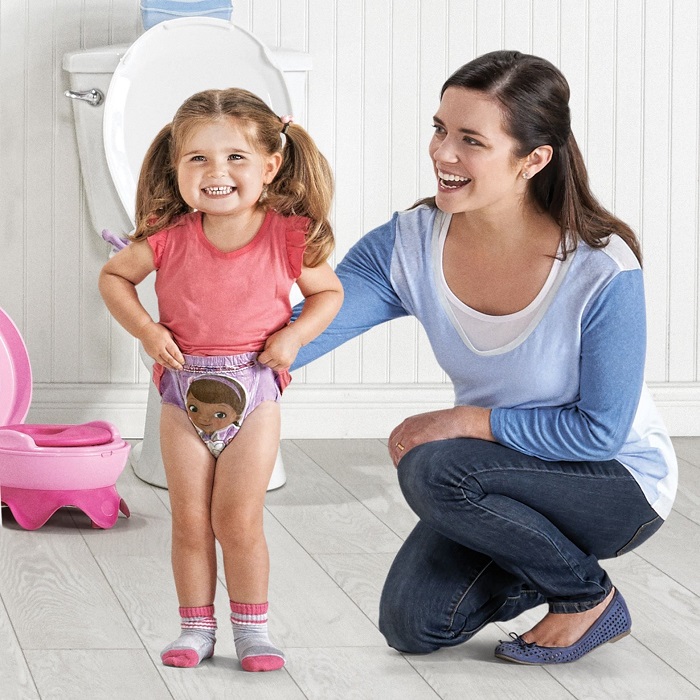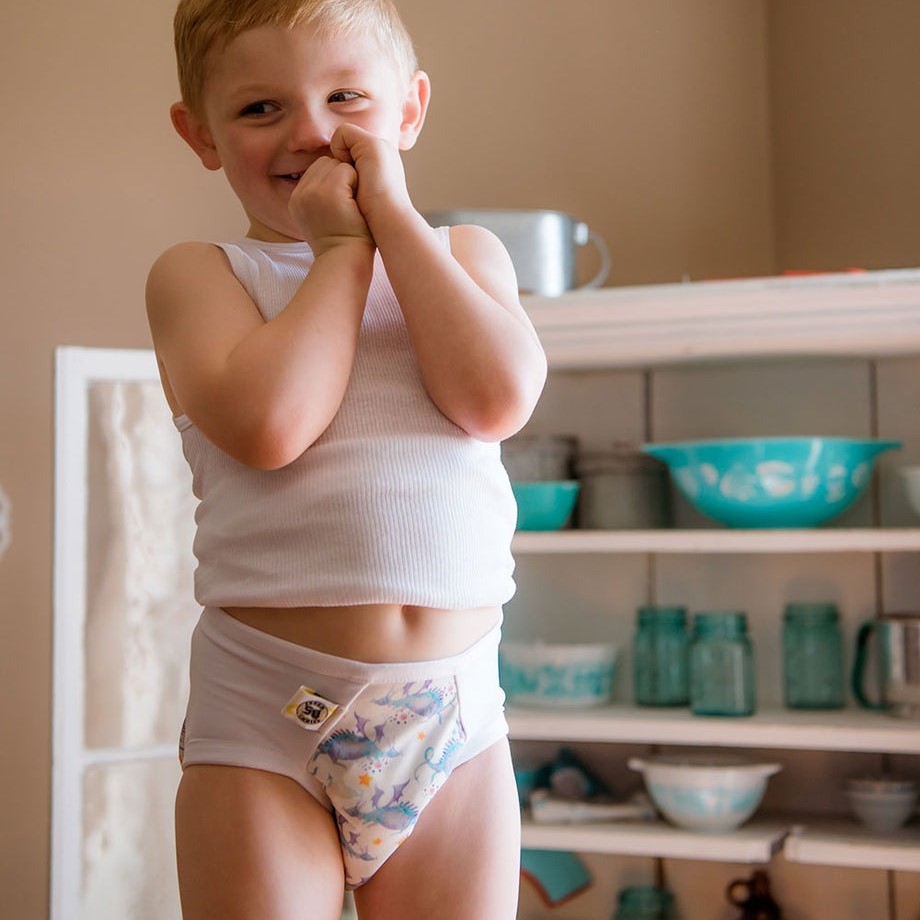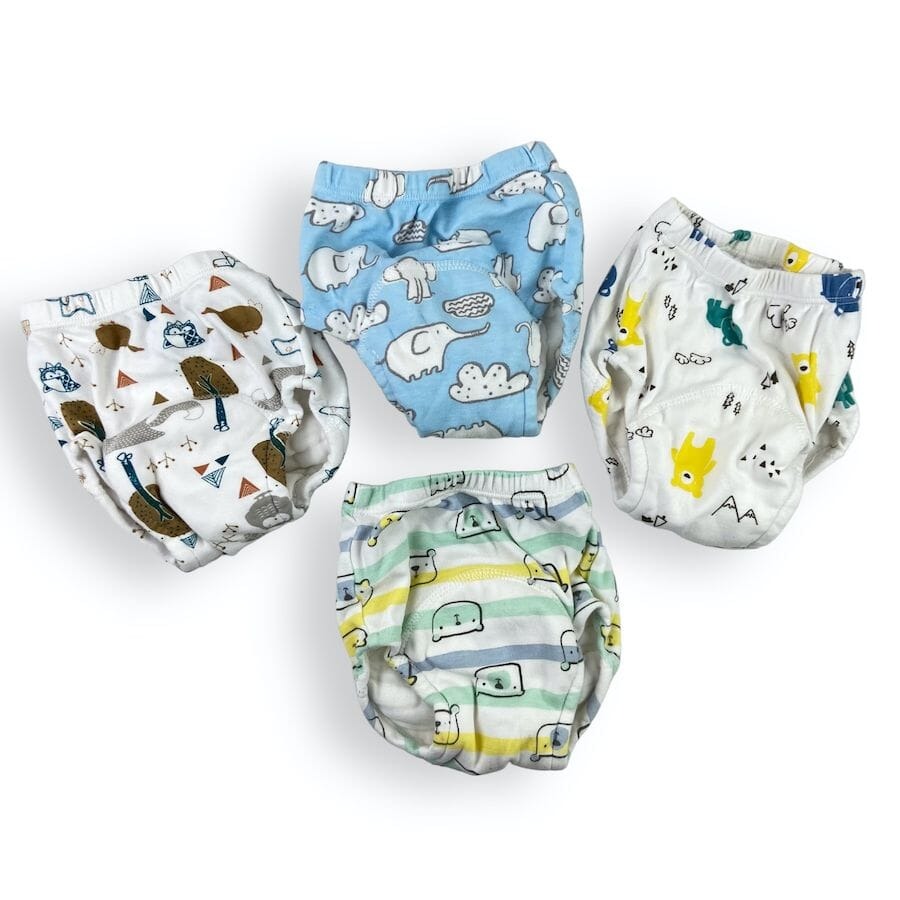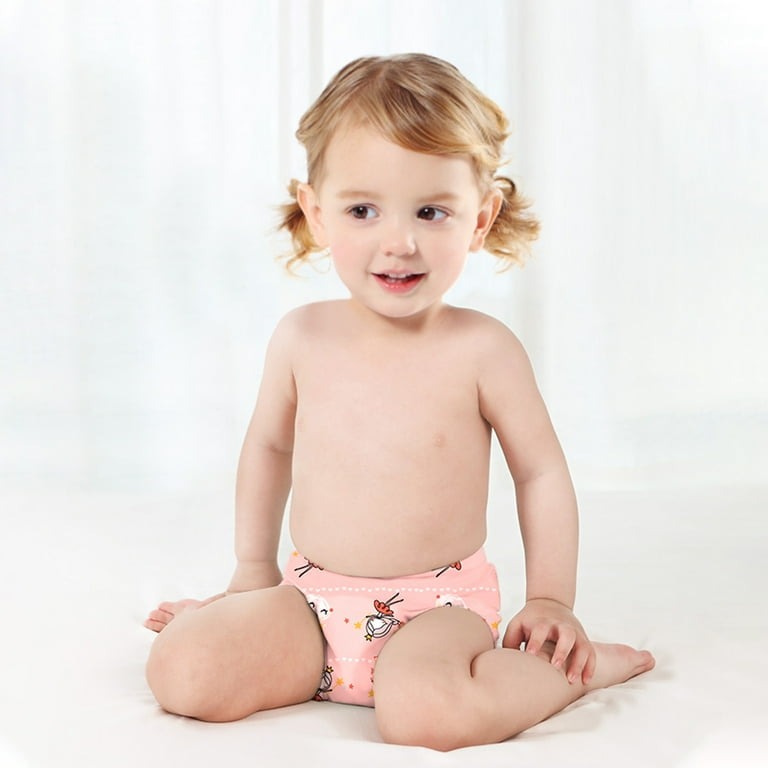Benefits of Using Training Pants for Potty Training
When it comes to potty training, the transition from diapers to regular underwear is a big step for both toddlers and parents. Training pants, specifically 3-4 training pants, play a pivotal role in this process. Here are some key advantages they offer:
- Ease of Use: Training pants are designed to be pulled up and down easily. This supports toddlers in practicing the movements they’ll use with regular underwear.
- Confidence Building: They help toddlers feel more grown up, which boosts their confidence and encourages them to use the potty.
- Leak Protection: While allowing your child to feel the sensation of wetness, 3-4 training pants also contain small accidents, thanks to their absorbent layers.
- Designs that Teach: Many have color-changing designs when wet. This teaches children the concept of dry and wet and promotes cognitive development.
- Transition Friendly: Training pants bridge the gap between diapers and underwear, getting toddlers used to the idea of changing themselves.
Incorporating 3-4 training pants into your child’s potty training routine can simplify the process significantly, making it less stressful for everyone involved. It is crucial, however, to choose the right type of training pants, which we will explore in the next section of this blog.
Key Features to Look for in 3-4 Training Pants
When selecting 3-4 training pants for your toddler, several features are key to consider:
- Absorbency: Look for pants with good absorbency to prevent leaks but also allow the child to feel wetness.
- Comfort: Ensure the material is soft and non-irritating to avoid discomfort or rashes.
- Elastic Waistbands: This aids in easy pull up and down, promoting independence.
- Appealing Designs: Fun designs can motivate kids to wear them and use the potty.
- Tear-Away Sides: For quick clean-ups, pants with tear-away sides are very practical.
- Reusable vs. Disposable: Decide if you want washable options or the convenience of disposables.
Choosing the right 3-4 training pants involves a mix of functional and emotional elements. Aim for pants that meet your child’s needs and make them excited about potty training. Keep these features in mind to ensure a positive and effective potty training experience.
The Difference Between Training Pants and Regular Diapers

Understanding the distinction between 3-4 training pants and regular diapers is pivotal for potty training. Here are some key differences:
- Fit and Purpose: Training pants fit more like underwear and have a specific purpose. They help toddlers learn when they are wet and need to use the potty. Diapers, on the other hand, are designed to absorb and conceal wetness. They are for babies who are not yet ready to start potty training.
- Feeling of Wetness: Unlike diapers, which keep a child completely dry, training pants allow toddlers to feel the sensation of wetness. This is important for them to recognize the need to go to the bathroom.
- Independence: Training pants enable toddlers to pull them up and down on their own, promoting independence. Diapers usually require a caregiver to change them.
- Absorbency: Although training pants are absorbent, they are less so than diapers. Their main aim is to catch small leaks, not to contain full bladders.
- Transitioning Tool: While diapers are a necessity from birth, training pants serve as a transitioning tool. They bridge the gap between baby diapers and regular underwear during the potty training process.
By choosing 3-4 training pants over regular diapers during the appropriate stage of your child’s development, you’re supporting their journey towards becoming fully potty trained.
Top-rated 3-4 Training Pants on the Market
When shopping for 3-4 training pants, the market offers numerous options. It’s vital to select a highly-rated brand that reflects the key features previously mentioned. Here are some of the top-rated training pants that parents trust and kids love:
- Pull-Ups Learning Designs for Boys and Girls: Known for their fun graphics that fade when wet, they are perfect for teaching toddlers about wetness.
- Pampers Easy Ups: These pants offer a comfortable fit and reliable leak protection, making them a favorite for both toddlers and parents.
- Huggies Little Movers Slip-On Diapers: Ideal for active toddlers, they come with easy-open sides for quick changes.
- Gerber Training Pants: Made of 100% cotton, Gerber’s pants are washable and reusable, an eco-friendly and cost-effective choice.
- Bambo Nature Training Pants: These pants are hypoallergenic and free from harmful chemicals, ensuring your toddler’s skin stays safe.
While each brand has its unique selling points, these options remain popular for their absorbency, comfort, ease of use, and design. It’s essential to consider your child’s preferences and size when making a choice. Always remember to introduce the training pants in an exciting and positive way to boost your child’s engagement in the potty training process.
How to Introduce Your Child to Training Pants
Introducing 3-4 training pants to your child is a critical step in their potty training journey. Here’s how to make the transition smooth and positive:
- Start with a Conversation: Tell your child about the new 3-4 training pants. Explain their purpose and how they differ from diapers.
- Let Them Choose: Involve your child in picking out their training pants. Allowing them to select the design can make them more excited to wear them.
- Create a Routine: Establish a routine that includes when to wear the training pants. For instance, you might start by using them during daytime hours.
- Encourage Independence: Motivate your child to pull the pants up and down on their own. Praise their efforts to boost their confidence.
- Pair with Potty Training: Link wearing the training pants to using the potty. Explain that they can avoid the feeling of wetness by using the toilet.
- Stay Positive: Keep the mood upbeat. If your child has an accident, reassure them that it’s part of the learning process.
- Practice: Allow time for your child to get used to the training pants. Practice pulling them up and down together until they feel comfortable doing it alone.
By following these steps and considering your child’s individual needs, you can help them adapt to wearing 3-4 training pants with ease and excitement. Remember to be patient as every child adapts at their own pace.

Potty training can be unpredictable. Setbacks and accidents are common but manageable. Here’s a guide to navigate these challenges:
- Stay Calm: When accidents happen, remain calm. Your reaction teaches your child how to cope with mistakes.
- Be Supportive: Never scold or punish. Encouragement is key. Praise their efforts, not just successes.
- Consistent Response: Adopt a consistent way to deal with accidents. This helps your child learn what to expect.
- Reassurance: Assure your child that accidents are normal. Reiterate that everyone has them while learning.
- Identify Patterns: Notice when accidents tend to happen. Use this information to adjust your training strategy.
- Visual Aids: Employ charts or stickers as visual progress tools. They provide positive reinforcement for staying dry.
- Clothing Practice: Practice dressing with loose-fitting clothes. This helps prevent accidents by making undressing easier.
- Hygiene Habits: Teach good hygiene. Explain how to wipe properly and wash hands after using the toilet.
By integrating these approaches into your potty training routine, you help your child feel secure and supported. Focus on the long-term goal of independence in toileting, not the short-term hiccups.
Maintaining Consistency with Training Pants During Outings
When it comes to outings, consistency is key in potty training. Parents should maintain the same routine they’ve established at home when they’re on the go with their little ones. Here are some useful tips to keep in mind:
- Pack Extras: Always bring extra 3-4 training pants for your child. This ensures you’re ready for any mishaps.
- Choose Accessible Outfits: Dress your child in clothes that are easy to remove. This helps when they need to use the potty quickly.
- Locate Bathrooms: Know where bathrooms are located. Making them easily accessible can prevent accidents.
- Routine Reminders: Remind your child to use the bathroom at regular intervals. Stick to the potty schedule you have at home.
- Positive Reinforcement: Praise your child when they successfully use the potty while out. This will encourage them to keep it up.
- Preparedness for Accidents: In case of accidents, stay calm and handle them as you would at home. Use these moments as learning experiences.
Maintaining the use of 3-4 training pants during outings helps solidify your child’s potty training habits. It reinforces the idea that the rules don’t change just because the location does. By keeping this consistency, your child will get better at recognizing their body’s cues and using the potty, even when away from home.
When to Transition from Training Pants to Underwear

Knowing when to switch from 3-4 training pants to underwear is a major step. It signals that your child has made significant progress in their potty training journey. While there’s no one-size-fits-all answer, here are signs that it might be time:
- Consistent Dryness: If your child stays dry for several hours at a time, or wakes up dry from naps, it may indicate readiness.
- Predictable Bowel Movements: Once you notice a regular pattern in your child’s bowel movements, this is a green flag.
- Independence in Bathroom Habits: If they can pull their pants up and down without help and often ask to use the toilet, they’re showing independence.
- Communication Skills: Being able to tell you when they need to go, before they need to go, is crucial.
- Interest in Underwear: Showing interest in wearing ‘big kid’ underwear can also suggest they’re ready.
When you see these signs, consider introducing underwear during the day while possibly continuing with training pants at night. Make the change a celebration; praise your child for their achievement. Remember to be patient as they adjust to this new stage. There may still be accidents, which are perfectly normal. Keep reinforcing positive behaviour and providing gentle guidance throughout the process.




